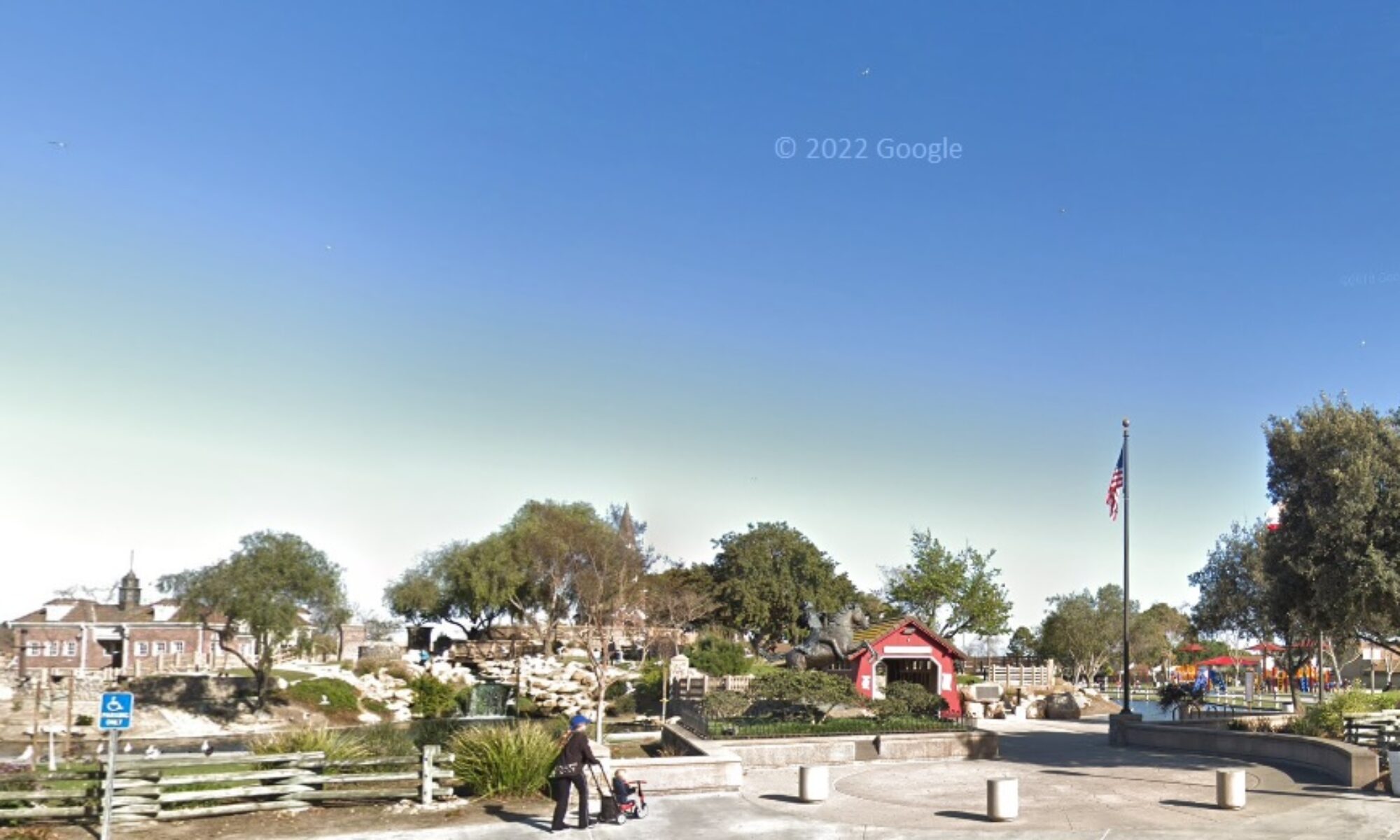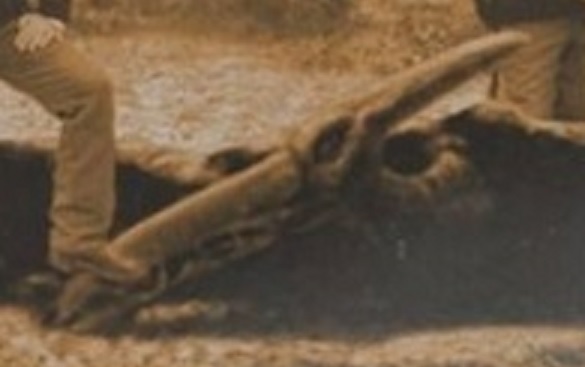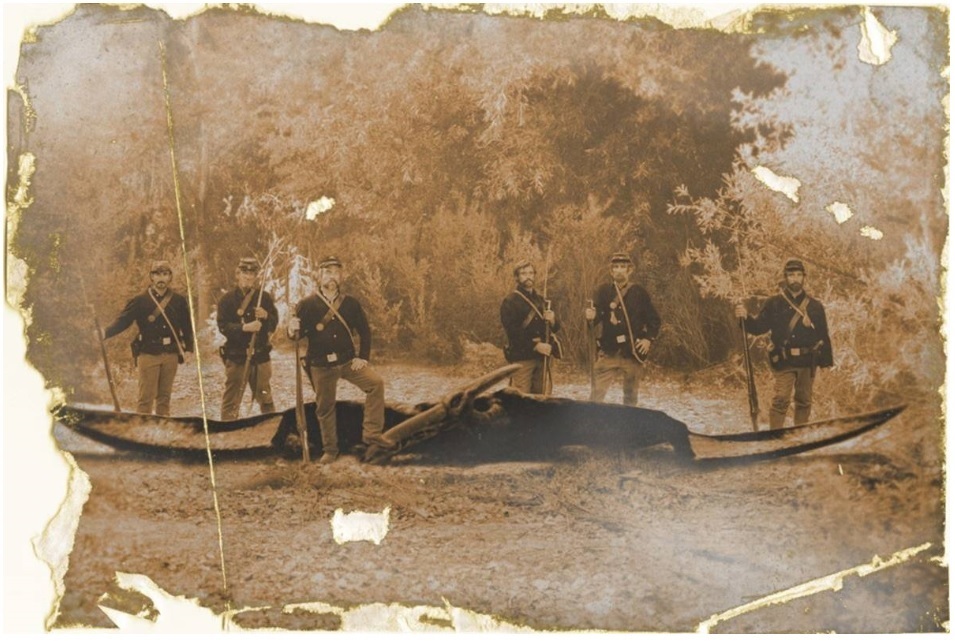The link below takes you to a post ending with “a small sapling tree may have been broken down to allow a real object to be dragged into the clearing . . .” (That post explains why the apparent soldiers were NOT Civil War reenactors, at least not standard reenactors: Uniforms and equipment and body build differ too greatly from the norm.) [regarding a potential modern pterosaur]
Civil War Photo of a Pterodactyl
.
The following image (Ptp) may have originated from a genuine photograph in the 19th century, although it was very unlikely to have been during the American Civil War, which ended in 1865. Although digital manipulation is highly likely to have been made on the original photo, in recent decades, we now have evidences that the “monster” in Ptp may have been a real animal.
(Keep in mind that this image does not show a perspective that would allow us to see whether or not the apparent pterosaur had a long tail.]
Ptp image of a possibly genuine modern pterosaur
.
Why the apparent flying creature may have been a real object
For the moment, set aside the controversial idea that the apparent flying creature in the Ptp image was a genuine pterosaur that was legitimately photographed. Let’s first examine the idea that the thing was a real object that was in that clearing: that the thing was tangible, spread across the ground in that clearing, when the original photo was recorded.
If evidence shows that it was a physical object, rather than only a digitally created non-real object, then we can look deeper into what that strange-looking thing might have been.
.
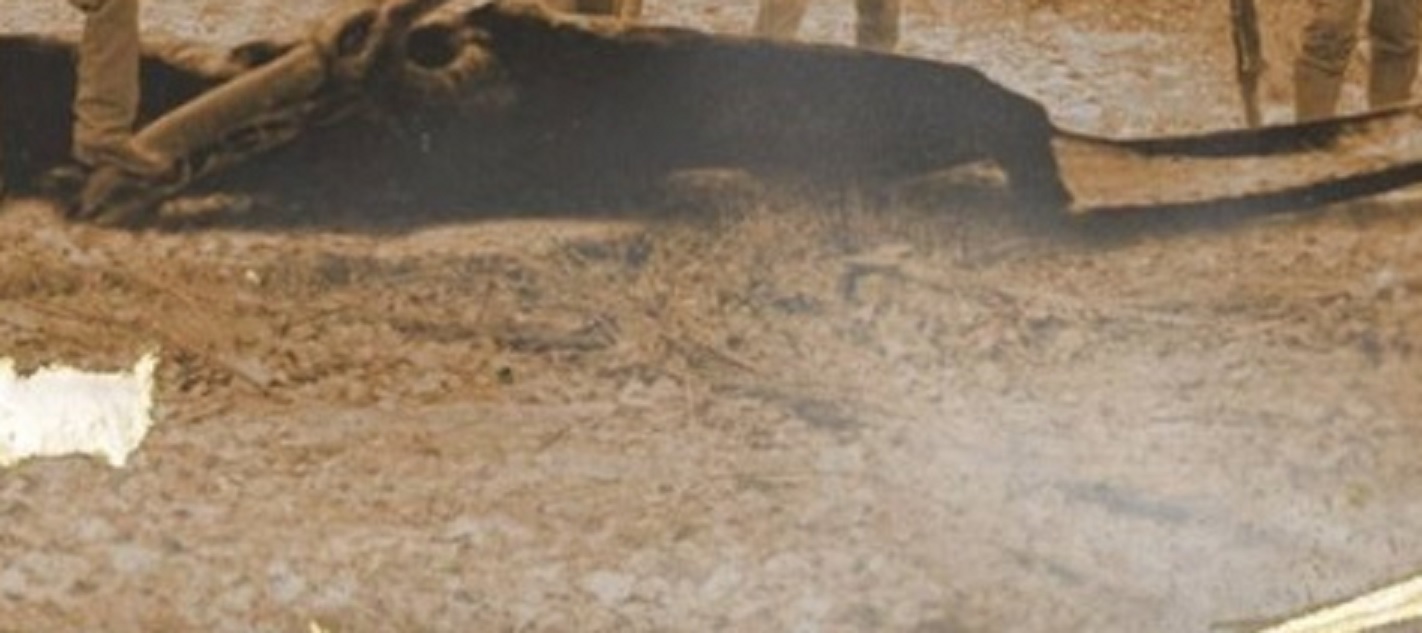
Test yourself with the above image
Do you notice anything that may be relevant in the above portion of Ptp? The great majority of people who look at the overall image probably never notice that important evidence, unless it is pointed out to them.
Here’s a clue: Two pieces of evidence suggest where that apparent creature came from, and neither of them relate to the wing. After you’ve looked for those two things, refer to two images at the bottom of this post and see how you did.
.
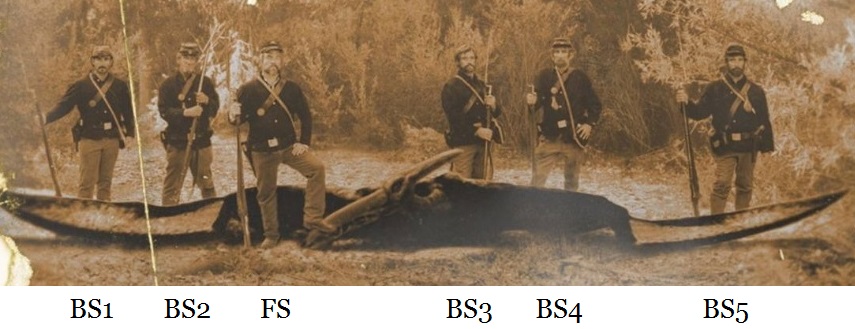
The belt buckles of four of the above men were measured and show that “FS” was standing slightly closer to the camera compared with the other three, when the photograph was recorded. In addition, that man in front has his boot resting on the end of the beak of that thing, and that beak casts a shadow on that beak. Those details are evidence that the apparent flying creature was a real object, whether or not it was a modern pterosaur or only a model of one.
The apparent flying creature WAS a real object
The above evidences show that it was indeed a physical thing instead of a digitally-created object. (But see also the two images at the bottom of this post, each of which is consistent with the concept that the object was real.)
Could that object be a non-extinct pterosaur?
Other blog posts and Youtube videos support the concept that this was indeed a modern “pterodactyl” (although the technically correct word for such a featherless flying creature is “pterosaur”). To be brief, we here look at just some of the relevant details.
Those six men were photographed together with that object, but the photo was not taken during the American Civil War, which ended in 1865. The belt buckles and pistol holsters of these common (not officer) soldiers show that the original photo was very likely recorded between 1866 and 1880.
Evidence for an earlier period of photographic recording suggests that it is unlikely that is was after about 1880, when techniques in photography allowed for much quicker recordings. The man with his boot on that beak had, apparently, a block of wood or a branch underneath, helping him to keep very still for the number of seconds required for the photo to be taken.
But how could any group of persons have constructed a model of a pterosaur at that time, when knowledge of such flying creatures was so primitive compared with later in the 20th century and in the 21st century?
It is most likely that this was a real modern pterosaur. The photographer may have insisted that the men drag it out of the underbrush, for it would have been too dark or too obscured to take the shot there. That fits with the drag mark, showing where it was dragged from, and the broken-down little tree, which would have been in the way if they had let it stand.
.
Check yourself with the two images below:
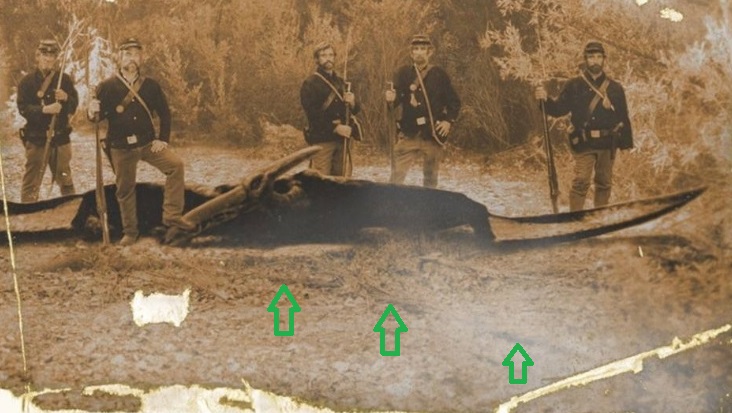
See the drag mark on the ground, leading from the lower right to near the end of the beak of that apparent flying creature. This is evidence that the thing was dragged into this clearing, probably to have it photographed.
.
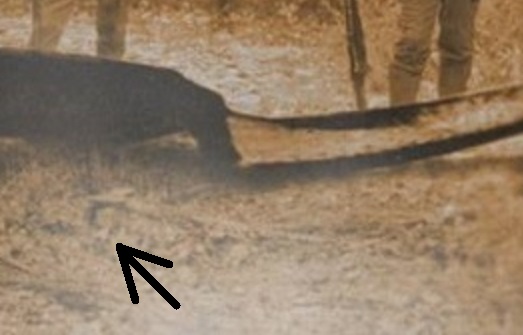
This little sapling tree appears to have been broken near the ground and bent over, probably so that the flying creature could be dragged into the clearing so that it could be photographed.
.
###
.
Pterodactyl may be real in this photo
Were they Civil War reenactors of the 20th or 21st centuries? No, that is very unlikely. Why? They would have had oval belt buckles, for actors portraying common soldiers on the Union side of the Civil War have oval belt buckles, almost without any exception . . .
.
Sightings of modern pterosaurs in Mexico, the United States, and Cuba—these are featured in this mini-documentary on encounters eyewitnesses have had with living “pterodactyls”.
.
Evidence of a modern pterosaur
In one account (not first hand) some natives in Papua New Guinea had captured a creature that was thought to be a ropen. That animal was kept for some time, in a cage, for it would have been dangerous for the local natives if it had been released.
.
Live pterosaurs in the United States
At least two species of pterosaurs have survived, uncommon, not so much rare as widely, thinly distributed. Nocturnal pterosaurs have always lived among us, but hidden by something. . . .
.
Ropen or pterodactyl videotaped in North Carolina
. . . flying over the city of Raleigh, North Carolina, two ropens showed themselves in clear daylight and were videotaped by Cynthia Lee . . . Magnifying and slowing down the video footage, we can see that these two flying creatures have a different wing flapping style than at least most birds.
.
Modern pterosaur with a long tail
How common is a long tail on a modern pterosaur! Of the 128 more-credible sighting reports compiled at the end of 2012, 41% reported a long tail.
.
Youtube videos on modern pterodactyls
“Giant Pterodactyl in California” is one of the videos featured on the Youtube channel “Protect Animal Life”.
.
